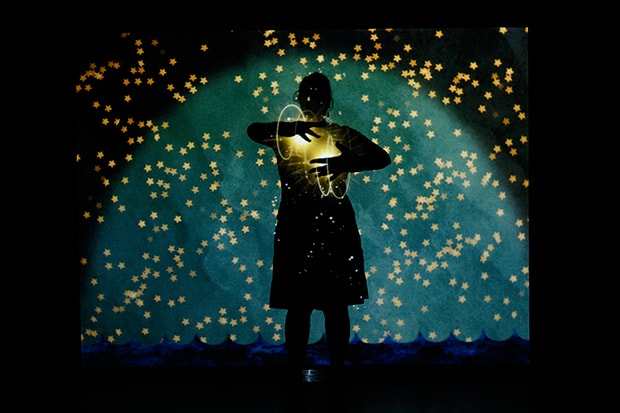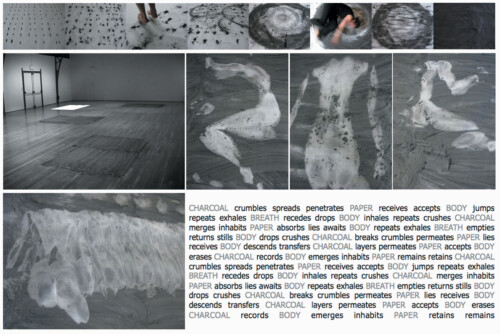The complexity of gender requires an interdisciplinary and postdisciplinary set of discourses in order to resist the domestication of gender studies or women studies within the academy and to radicalize the notion of feminist critique.
—Judith Butler
With the word “Feminist” being nearly lost to (or perhaps subsumed by) corporate boosterism today, discourses of “leadership” and “empowerment” of women are favored by those branding cultural commodities, by universities, and—as Coco Fusco famously argues in A Field Guide for Female Interrogators—in select modernizing endeavors favored by the military and the art world alike.1 Given the cultural sea change endemic to the geopolitics of capitalist new media and how it has been aggressively presided over by capital’s savvy organic intellectuals, one might wonder what became of the radical aspects of feminism within academia and beyond. This issue of The Scholar & Feminist Online is not designed to give a full account of the dissemination and reinvention of the forms and practices of radical feminism that both precede and continue well beyond the de-essentialization of “woman” and of “the feminine”—an ungrounding of the signifier from the signified that might be seen, mediologically, as part of a wholesale transformation in the role and status of representation on a world scale. It does, however, recognize that the now seemingly complete dismantling of institutionalized feminism has been the result of a diversity of practices, many of them reactionary and appropriating, but many of them more radical still than some of the forms of feminism consolidated as what is often referred to as the second wave—a moment which in certain respects represented feminism’s institutional heyday.
In invoking a more radical set of wellsprings of feminism than the standard (and, at the cutting edges, all but dismissed) narratives of waves would allow, and, as importantly, in invoking a more radical influx into the academic institution through the tear in the ivy opened in part by feminism, but also by critical race theory, cultural studies, queer theory, and the larger social movements which gave, in a dialectical way, these intellectual formations their social basis, material force, guidance and inspiration, I am referring here to the contributions and critiques offered within and beyond academic institutions by critical race theory, queer theory, postcolonial theory, and transnational feminism. Each of these, in its own mode, revealed the subject of institutionalized feminism—despite her aspirations to post-patriarchal forms—to be raced, sexed, gendered, classed, cultured, and nationalized in ways that were only invisible locally (and hence discursively smuggled in as universal). From an even slightly more cosmopolitan point of view, the subject of institutionalized feminism was often egregiously ethnocentric, which is to say self-identified, self-serving, and universalizing.
The emergence of these critiques within the institutionalized framework of academic discourse in the humanities (and to a lesser extent in the social sciences) shattered the subject of feminism. This, however, in no way meant that these emergent fields were not engaging in feminist practices. Rather what was forever lost was a single subject of and for feminism, and with it the aspiration for a single or even clearly identifiable feminism. Hence Butler’s call for an interdisciplinary and indeed postdisciplinary set of discourses for the radicalization of feminist critique.
I tell the story this way because it seems to me inseparable from two other simultaneous versions of the deconstruction and dissolution of subjects that are not always thought about in the context of feminist critique. The first, of course, I have already alluded to: the array of “post” discourses that would include poststructuralism and deconstruction, postmodernism, postcolonial theory, and now posthumanism. All of these, it seems to me, are ineluctably connected to the epistemic and therefore political break up of a certain specific historical formation of white Western patriarchy and indeed, brilliant feminist scholars have been fundamental articulators of these fields. From the deconstruction of being and the end of man; to the emergence of discourses about performance; to the development of the critique of Orientalism and the interrogation of hierarchical thinking in culture and art; to the emergence of ideas of assemblage, the 1,000 or 10 billion plateaus; to cyberfeminism and the significant analytics around the feminization of labor—all of these various iterations of shifts in epistemology and metaphysics were intimately connected; the order of things was being radically reconfigured. It is what was happening. This reconfiguration had everything to do with the refusal of epistemic nonexistence by the marginalized and exploited—more than half of whom, it is safe to say, were women, among other things. It also had everything to do with an increasingly generalized awareness that the epistemic conceits of white, Western hegemony and its would-be transcendental subject were necessarily part of the violent basis of power and oppression. Here one could wonder about the mediations at the level of discourse and sociality, but it seems clear that whether it was women in the Algerian revolution, los madres de la plaza in Argentina, women demonstrating during the political upheavals in Iran, or radical women of color in the United States consolidating their knowledge and resources across externally imposed ethnic divisions, the old-style subject of knowledge and power—the transcendental white man—was, for radical politics anyway, on the way out. So, too was, the transcendental (white) woman. And good riddance!
The other achievement of feminist practices that we might want to claim may come as more of a surprise to some. But it would be worth the wager to argue that “the social network,” or what is often called social media, is the reified name for a consequence of the resultant vector of mass struggles for liberation—much of which is constituted by women’s struggles around the world. Contrary to the dominant leftist and autonomist conceptualizations of virtuosity, immaterial labor, and cognitive capitalism, Leopdina Fortunati—to cite but one outstanding example—demonstrates the clear connection of emergent forms of political economy and communication to feminine and feminist labor.2 The thesis here would be that it is more accurate to recognize peoples’ struggles as the fundamental drivers of changes in technosociality—not a few Mark Zuckerbergs and Sergey Brens. In the current economic system, the capitalist “genius” is a structural necessity—an accumulation strategy absolutely required by investment banks and financiers. However the real credit for the technological changes that have themselves intensified the dissolution of the regime of the subject and produced situations of distributed agency and creativity ought to be assigned to the immediate practices and emergent needs of a global population participating in a politics of survival—that is, a population caught in the gyre of globalization and vulnerable to all of the dynamics of its nuanced and complex matrix of race, sex, gender, nation, culture, and class. In other words, it is the requisites of struggle and the aspiration for new forms of liberation, equality, sensation, sensibility, and perhaps citizenship, that have driven the emergence of new media—the very media that are often credited in one way or another with the dissolution of the subject and the human.
However accurate or inaccurate the above sketch may be in situating feminist and subaltern struggles at the core of the political and technical transformation of subjectivity and epistemology, at least its serves the purpose of configuring a complex interrelationship between feminism, the history of institutional discourses, technology, globalization, geopolitical agency, and cognitive capitalism—and it is precisely this admittedly almost unconceptualizable array of relationships that occasions this special issue of The Scholar & Feminist Online. Because despite all of the movement to the contrary, it is also clear that the legacy of white-supremacist, capitalist patriarchy still prospers, and that furthermore, by a kind of heliotropic effect, it continues to structure knowledge making of all sorts and, particularly here, iterations of media theory. Precisely because the latest iterations of media capitalism appear to some to be so technology-heavy and thus devoid of bodies (and especially marked bodies), a kind of intense disavowal of issues and concerns that previously might have belonged to “feminism” is underway. Whether the concern is binary code, finance capital, attention economies, or speculative realism, one may see a kind of disavowal of the presence of others and of historical beings generally. Informatics appears to convert difference to the same substrate (data trails), thus rendering lived social difference supplemental and ostensibly incidental and unimportant. As has been remarked in one way or another, the placing of such emphasis on the theoretical account of today’s capitalist machinations in informational and technological terms that do not resolve issues of race, gender, and class, are among the measures taken by the patriarchal unconscious to disavow the significance of difference and to reestablish the universality and degree-zero powers of white masculine privilege in knowledge making. The fact that many who are becoming the proprietors of these institutionally supported epistemic platforms are the historical beneficiaries of a racist, classist, sexist, gendered hegemony is an issue that some of those who have the floor in media studies would prefer to ignore.
The fact that this selfsame, “critical” discourse which has its basis in informatics (and those enfranchised by its apparently apolitical modality) perpetuates radical inequality is something disavowed, if not outright denied. One suspects that when the institutionalization of media studies fosters a “critical” response to the recent emergence of new media that fits a little too hand-in-glove, that is, when the parameters of the analysis stick too closely to the parameters of the analytic machines—and thus ignore their machine’s conditions of possibility; their collateral damage; and their implantation in the raced, gendered, sexed, nationed, colonized, and capitalized flesh of the world—then the “critique” occurs without a fundamental questioning of the very terms of engagement. We are thus confronted by an urgent need to temper the celebratory undertones (and overtones) and see that computerized media-capitalism is simultaneously a rupture and a form of historical continuity, and that none of the haunting and pressing questions of injustice can be answered by technology itself. Indeed, as many writers here are at pains to show, there is no such thing as technology itself. Furthermore, it is to the resources and insights of the legacy of subaltern struggles and the polyvocality of their discourses that we should turn for both a challenge to various forms of technological determinism and an already much-needed redefinition of media theory.
This issue, then, is not just a special issue but in many ways an extraordinary issue. The issue was conceived of as a kind of corrective to the relative absence of feminist, queer, transnational, antiracist, anticapitalist media theory in what currently appears as a kind of dominant set of conceits and concerns in media studies. In one way or another, each of the essays aspires to place these marginalized and subaltern concerns at the center. In short, the idea is that technofetishism prevents and excludes an otherwise obvious perception: that mediation and sociality are inseparable. In other words, all the social relations that inhere in globality are not only mediated by technologies—but more profoundly, are constitutive of them. Just as our cultural and symbolic forms bear the impressions of their histories, so do our technologies. Form, it has been remarked, is always an ideology in its own right, and this theoretical meme is no less useful when applied to technological form. Racism, sexism, imperialism, etc., are there to be read in the materials and practices of mediation if one knows how, and the premise here is that we must know how better; we must learn how and discover how through a multiplayer conversation that involves research and writing, certainly, but also involves dissemination, teaching, talking, sharing, arguing, and transmitting. Certainly, what I am writing here is in no real sense my own work, but already the result (if flawed, partial, and incomplete) of conversations I have been part of and would like to be part of; images seen; texts and ideas read, skimmed, intimated, or neglected. I contribute my agency to the collective work that calls me to becoming. It is this sense of an immanent collective struggle that draws upon and extends the work of the various feminisms that inform this issue’s constellation.
Thus, it is with a sensibility somewhere between intervention and insurrection that this work of cut-n-mix, this insistence on the continuing relevance of the claims of the oppressed in any and all conversations and in any and all epistemic frameworks—that this issue of S&F Online was conceived. One or many of the myriad calls for social justice that haunt our language(s) pose the questions, generate the abiding concerns, and provide the inspiration that structure this issue and the essays and artworks herein. The issue is comprised of pieces, which when read next to one another are diverse in focus, in form, in style, and in topic. What they share, however, is a significant commitment to feminist approaches to social difference, as well as a recognition that taken together, media and media theory imply the profound reorganization of social production and reproduction, and with that, the urgent need for a reconceptualization of the fundamental questions of history, culture, politics, and social justice. Naively perhaps, I had hoped at the outset to venture some working definition of feminism, or at least of feminist media theory so that, if nothing else, one would never have to unsatisfactorily encounter persons (students or not) who felt that to call themselves feminists was at once to date themselves and/or to endorse a set of positions that are either no longer relevant or too radical for their liking, or…. At least, I had hoped I could come up with a sentence or two which, if one did “by chance” come across people unwilling or unable to embrace feminism, one could provide if not a full answer for why feminism remains significant, then at least a clear direction for learning and further inquiry. Alas, no such two-bit or even 160-character phrase is forthcoming from this quarter, save for the idea that the concerns and practices of feminism appear so diverse they seem to defy definition. But it seems at least that feminist concerns remain essential to the struggles for social justice—so much so that we might agree that there will be no arrival of social justice without the work of feminism and of feminists.
The Essays
Patricia Ticineto Clough, in her scintillating and indeed vibrating essay, “In the Aporia of Ontology and Epistemology: Toward a Politics of Measure,” delves into speculative realism and object-oriented ontologies to pursue the insight that:
The effects of media technological developments often are distributed differently across conceptualizations and experiences of space and time, history and geography, realities and knowledges including subjugated ones, as well as attendant subject formations, bodily matters, identity and identification. Or to put it another way, media technological developments often (and perhaps necessarily) put the transformation of being and the transformation of knowing out of sync with one another such that the transformation of one may receive more thoughtful attention than the other, at least at first.
Her essay participates in “a refusal of a linguistic imperialism that ignores … [digital] expressions of potential as vibrational surfaces or oscillators in order to draw out the implications of S. Goodman’s idea of ‘an affective calculus of quantum rhythm’ and L. Parisi’s notion of ‘a sensual mathematics.’” Clough proposes that a focus on a politics of measure, on affect, and on ecologies of sensation allows us to “participate in changing the meanings assumed in discourses of social difference.” This, she suggests, allows us to rethink the calculus of violence endemic in the reductive constitution of multiplicities into—if I am not mistaken—analog identitarian categories such as race, gender, and nationality. Thus she calls for the development of a methodology that could undertake and presumably apply a politics of measure that while mediatic and nonsubjective in approach would nonetheless participate in the reduction of violence, however phenomenologically or, for that matter, realistically perceived.
Katie King’s contribution, “A Naturalcultural Collection of Affections:
Transdisciplinary Stories of Transmedia Ecologies Learning” is, in her words, “a multimedia bibliographic essay with an argument: working out in a posthumanities multiverse of articulating disciplines, interdisciplines, and multidisciplinarities requires a feminist practice of transdisciplinary inspection.” It is also a work of great subtlety, deftness, sophistication, and highly refined play. King threads her way through some of the ideas of her most brilliant teachers, interlocutors, and fellow travelers (Gregory Bateson, Donna Haraway, Bruno Latour, Rod Ferguson, Karen Barad, Sara Ahmed, and Chela Sandoval—to name a few) at once paying homage to them and extending their achievements. Her work here produces and performs a kind of transdisciplinary combinatory of resonances and affinities that seeks complexity, diversity, and worldedness, alongside and as part of feminist, queer, pleasurable, distributed, political articulation. It is an astonishing example of a bibliographic essay—immersed in, indebted to, and creating with the works and concepts it engages and represents. Each thinker she draws on—or better, with—is opened to the others in surprising ways, the inter- and extra-subjective passage through and connection of ideas is all the while guided by King’s confident and connective movements. This essay/platform is in many ways a formal as well as an intellectual tour de force, seeking, as King writes:
Transcontexual movement without falling apart–where we participate as the transmedia ecologies, learning. A struggled after “posthumanities” tasks itself, from the very depths of restructuring, to refocus on many projects of decolonization, antiracist politics, feminist transformation, and sensitized transmedia knowledge practices.
Jonathan Beller’s essay, “Camera Obscura After All: The Racist Writing with Light,” endeavors to dismantle a dimension of the platform fetishism that reifies the photographic apparatus in order to propose that photography is itself a racial formation. For Beller the rise of photography, on the one hand, and the development of the modern logistics of perception that objectifies bodies and converts subjects to objects for another subject along vectors of race and gender, on the other hand, are inseparable. Treating Roland Barthes’ still widely accepted statement on “the essence of photography” in the canonical Camera Lucida as symptomatic, Beller demonstrates that this “essence” of a technology is textually derived vis-à-vis racial troping. Barthes rhetorically traces a path through a series of photographs—principally photographs of racialized others, effectively disappearing race to speak about photography. This formal and rhetorical method generates the effect of the famous metasemiotic appearing of the Real in the photographic image. Thus the lucidity Barthes seeks in photography, expressed in his derivation of the photograph’s essential quality of “that-has-been” is constructed through his disavowal of a racializing logic that closely links the capturing of images directly to the capturing of bodies—as if the capturing of bodies was somehow not also essential to whatever photography “is.” The proximity of slavery and photography, Beller argues, is neither incidental nor coincidental, but rather constitutive of the historical co-development of racialization, commodification, and the photographic apparatus. In Camera Lucida, slavery haunts the photograph. It functions like an eternal return of the repressed and attests that the violence of the sociomaterial overdetermination of the meaning of bodies—that is, precisely their photo-graphing in regimes of slavery, patriarchy, and social death—is as much a part of photography’s essence as any chemically mediated indexicality. Only through a dismissal of the social and the historical factors that materially constitute a technical form may Barthes, or anyone else for that matter, define the features of a media platform as if it were a stand alone formation.
Deborah Levitt’s essay advances her provocative thesis of “the animatic mode of production” by developing an idea well described by her title, “The Subject of the Phantasm.” To do so Levitt draws on aspects of Kaja Silverman’s theory of proprioception, and deploys a set of significant concepts, notably, Paul Schilder’s “body schema” from which she observes, “we can see as a version of Freud’s ‘corporeal ego’ or Wallon’s ‘proprioceptive ego,’ [that] is in constant transformation.” Levitt argues that taken together, these ideas suggest that the Lacanian mirror-stage is too easily misinterpreted as a moment, rather than as a series of experiments that actually imply that identification occurs through multi-sensate corporeal practices. Going further in the development of her idea of the subject of the phantasm, Levitt uses Schilder’s “apersonalization” to showcase observers’ partial borrowings of corporeal practices and Scott Balcerzak’s term, “spectral kinesis,” to foreground the humanization of digital technologies during motion capture. This array of concepts specifies aspects of the animatic mode of production in which identification is processional and phantasmatic, and also sets up a brilliant analysis of what Levitt terms the “ethnotechnics” of Avatar. Her emphasis on “ethnotechnics” structures an analysis of the film that goes beyond mere ideological critique in as much as it charts the techné—that is to say, the techno-mechanics—of a neoliberal expropriation of historicocultural, ethnic, and gendered corporeal practices. This expropriation of historically wrought movement and form siphons off the creative energies of historical struggle, but leaves aside whatever elements might genuinely perturb a status quo that despite these struggles, remains a white-supremacist, patriarchal capitalist economy.
Roya Rastegar’s powerful article, “Curatorial Interventions at Sundance’s New Frontier,” makes a compelling case for rethinking the cinematic medium that so many regard as a fixed platform; her article stands as a significant contribution to reimagining a medium and a whole field of endeavor. Contrasting Shari Frilot’s curatorial strategies for New Frontier focused on “physical cinema” with Susan Sontag’s mournful longing for the loss of a cinema that produces “the experience of surrender to, of being transported by, what was on the screen,” Rastegar critically explores various modes of screen-mediated incorporation. These include the raced, gendered, and commodifying modes of commercial Hollywood cinema achieved through the solicitation of identification and criticized by critical race theory and Marxist modes of analysis. Rastegar also critiques the all-encompassing surveillance realized by the current new media environment everywhere saturated with screens. In contrast to formats that strategically expropriate the embodied aspects of spectatorship but are nonetheless associated with traditional cinema and cinephilia, or clandestine surveillance, Rastegar demonstrates that, “New Frontier, ‘physical cinema,’ is a way of framing the cinematic that calls upon the body to dynamically participate in making the meaning of the work.” This reframing of the medium develops new strategies for the mobilization of the body and different erotics than those sought by Sontag. Rastegar writes, “Frilot describes how the development and evolution of her curatorial strategies draw from poet warrior Audre Lorde’s theorization of the erotic[,] a concept ‘firmly rooted in the power of our unexpressed and unrecognized feeling’ [that] must be recognized as an invaluable mode of knowing that ‘rises from our deepest and nonrational knowledge.’” Rastegar describes how several of the installations curated by Frilot utilize the body and the senses to create new and alternative modes of cinematic-corporeal engagement. These dramatize the political practice of bodies and the spectator’s body as well as open the way for new forms of politics, community, and communion. Thus love for, in, and through the cinema, is not only limited to the cinephilia available to certain spectators in a bygone era. As Rastegar writes, “Shirking the alienating viewing practices that function to narrow conceptions of what it is to be human, we must scorn an oppressive desire for a cinema that requires we surrender, overwhelm, or lose ourselves in the moving image.”
In her essay, “Schizophrenic Techniques: Cybernetics, the Human Sciences, and the Double Bind,” Orit Halpern parses Gregory Bateson’s ethnographic work and his animal psychology to investigate the multiple means by and through which social difference is subsumed in the formation of our current concepts and technologies. Halpern provides us with the following provocation:
Bateson erased a history of colonialism, empire, and even revolution, in Indonesia to produce a seamless account of mind, while simultaneously offering the equipment to inspire others, most notably for contemporary readers Gilles Deleuze and Félix Guattari, to rethink the ego and the subject in new formations. In replaying these many scenes, perhaps, we recognize what it is to both recover history, but not return to it.
In examining the social, historical, and disciplinary conditions that underpin observations that were abstracted into and as communication theory and technologies, Halpern generates an image of what is surely part of a paradigm shift in the self-understanding of the disciplines of philosophy, cybernetics, and computation. Emphatically, this paradigm shift is not the one that Bateson was part of inaugurating, but one that Halpern among others is working on—what I would like to think of as a postcolonial feminist interrogation of the historicity of systems theory and computational thinking. Her essay strikes me as part of an emergent and very promising trend in media theory: a kind of Gramscian inventory and archival investigation of the unthought history of communication concepts and platforms. Interrogating this unthought history reveals the legacy of the practices of racism and colonialism that have been subsumed in the abstractions of contemporary communication and media theory.
Marina Gržinić’s monumental essay “Europe: Gender, Class, Race,” “insist[s] on a continued analysis of knowledge/coloniality/modernity,” and brilliantly articulates the connections, fault lines, and political stakes in the negotiation of the legacies of the terms race, gender, feminism, queer, and performance by exploring some of the ways in which the logistics of racialization, gender formation, and class function in the neoliberal reconstitution of Europe. Gržinić draws on Santiago Lopez Petit’s Global Mobilization: A Brief Treatise for Attacking Reality, which argues that the unrestrainment of capital simultaneously disrupts hierarchical categories while mounting new ones (capital “creates a paradoxical spatialization that requires two repetitions working at once: on the one hand, a founding repetition in which a system of hierarchy is reestablished, leading to the constant reconstruction of a center and a periphery; and, on the other hand, a so-called de-foundational repetition that presents itself as the erosion of hierarchies, producing dispersion, multiplicity and multi-reality.”) With this double movement in mind, Gržinić explores the racialization of Eastern Europe under the guise of “humanization.” She analyzes an exhibition presented in MUMOK, Vienna, and financed by ERSTE Foundation (which also manages ERSTE bank), “Gender Check–Femininity and Masculinity in the Art of Eastern Europe,” and that demonstrates an intimate relationship between finance, the art world, and the en-masse treatment of formerly Eastern European artists, who do not seem to qualify for individual subjectivity in this neoliberal aesthetic framework.
After exploring the contemporary interrelation between gender formations and the capitalist reconstruction of space, borders, and nation in what were once known as Eastern and Western Europe, Gržinić explores the rich history of performance and transfeminism in Belgrade, Zagreb, Sarajevo, and Lubjlana, elucidating a series of transitions which move “from sexually queer to politically queer.” Taken together, the works she analyzes not only critique heteronormative, racist, capitalist formations but “produce a space for political battles and creating agency for the political transfeminist subject.” Needless to say, this space is radically different than that of “Gender Check.” In the final section of this insurrectionary essay Gržinić shows how “humanization of the former Eastern Europeans is done at the expense of the racialized “non-subjects” whose access to the representational status of the “human subject” is fundamentally halted.” Comparing the Schengen border to the United States–Mexico border, she cites Brian Carr citing Hortense Spillers to demonstrate that, “Race thus stands at the vanishing point where sexual difference and the human resolve … into the ungendered figure of dehumanized racial ‘flesh.’” Invoking Mbembe’s claim “that the concept of biopolitics, due to the war machine and the state of exception, being one of the major logics of contemporary societies, should be replaced with necropolitics,” Gržinić argues:
In such a context, necropolitics presents the re-politicization (and historicization) of biopolitics. It is possible to argue that, in global capitalism, the institutions–primarily–of the ideological state apparatuses function today as biopolitical institutions; therefore art and culture, along with theory and criticism, education as well, not to forget the banks, etc., are today pure biopolitical machines: only taking care of themselves and their hegemonic Euro-Atlantic interests, while the social and the political (with its, as it is claimed, “autonomous” judicial system) are pure instruments of the necropolitical global capitalism.
Thus we may see from Gržinić’s work that a Marxist, feminist, queer, antiracist account of the fault lines and fractures in the dynamics of contemporary sociality begins to reveal the mediological modality of multiple, intersecting social institutions and trans-social forms. By grasping the intermediations of form, one also politicizes the practices endemic to the form.
Negar Mottahedeh’s contribution, “Iranian women in protest: 1953, 1978, 2009,” draws on a dialogue with Goldbarg Bashi, and on selected images from the photographic archive of these uprisings to show that, “the photographs, as fossilized light, establish a material and archeological fact, namely that the active presence of protesting women in the streets in the aftermath of the Presidential election of 2009 was not something new.” Mottahedeh analyzes the perspective of the photographs from these three periods as well as the fashions of dress present therein, noting about the most recent period, “the manicured nails, the threaded eyebrows, the strands of hair that show on the veiled forehead, are all markers of bodily defiance in public space.” Thus analyzing these images she explores aspects of an historical and here historicized sociality. Of the 2009 images she remarks, “We often think of the public sphere in the Islamic Republic, a state run by a firm-handed theocracy for thirty odd years, as a largely male, homosocial sphere. Yet, the camera insists in nearly every shot to capture the heterosociality of this sphere, just as it did in earlier moments of Iranian history.” Her close attention both to what is in the photographs and the way that they were made—usually by handheld digital devices from within the crowd—demonstrates that in the 2009 images, “these bodies are on strike against the ever-present regulation of the corporal by the state and demand representation as singular and individuated moments of revolt against it: the textual, the sartorial, the gestural and the technological speak to this in one voice.”
Cindy Gao’s essay, “The Virtuosic Virtuality of Asian American YouTube Stars,” examines a series of videos by Asian American YouTube celebrities (vlogs of NigaHiga and KevJumba and Wong Fu’s Yellow Fever), characterizing their practices of performing race as “virtuosic virtuality.” Without essentializing identity in any way—Gao sees the term “Asian American” as itself a form of virtuality—her concept of “virtuosic virtuality” cranks up the stakes of the virtual and suggests that here at least, these technologically enabled performances of ethnicity are subsumed by a capitalism that still requires and indeed develops racial regimes that are the legacy of white-supremacist capitalist patriarchy. Indeed, Gao shows by example that one can investigate real subsumption without insisting that Marxism trumps critical race theory. It is rather that in making the critique of a narrowly empowering Asian American performativity (narrow because achieved through the trafficking in gendered and racist stereotypes), antiracist and anticapitalist critiques go together. To be a bit simplistic, it is arguable that in the absence of anticapitalist and antiracist critique, the cultural movement is inevitably toward either a system of structural inequality that invents and, indeed, requires new forms of racism, which is precisely what is going on with many of the popular Asian American YouTube celebrities—there are certain advances, but somebody has to pay (e.g., women, South Asians). Or, in an anticapitalist critique that is not also antiracist, the movement is toward a critique of capitalism that sees racism as epiphenomenal, rather than constitutive of identities, practices, and markets. These latter Marxisms and post-Marxisms, in the absence of critical race theory would uncritically replicate the racist and Eurocentric assumptions of the era.
Artists
The artist section here is devoted to two artists who work in more traditional media—painting and photography—but are engaged in a critical dialogue with new media. Indeed their awareness of contemporary pressures on cultural production has driven both of them to produce new forms and practices. While both could be taken as working in the flux generated by larger trends of performance in photography (Vason), cinema and graphic elements in painting (Gadia), and bodily performance as part of a graphic process (X and Y), these artists’ works are particularly noteworthy for their affective power, relentless execution, and rigorous conceptualization.
Manuel Vason
Manuel Vason has worked with almost 200 performance artists around the world (many of them world-famous) to create some of the edgiest images extant. He is, without a doubt, among the most talented and challenging photographers of his generation. While everyone may draw their own conclusions regarding the meaning and significance of this work, my own sense of what his images pursue is singular desires and unique aspirations that emerge in the collaborative process between performance artist and photographer. These constellations recorded and extended in the photograph push us to exceed our own often comparatively mundane desires manufactured by markets; social fragmentation and isolation; and reified notions of race, gender, sex, etc. Encountering the performative articulation and transmission—literally, the forms of desire that studiously or spontaneously go beyond the inertial modes of wanting, which in many respects limit and capture so many of us in their aesthetical and political regimes—invites viewers to exceed the tired modes and norms of lack that result, in part, from the capitalist mass media’s stripping and homogenization of our libidos. In certain respects we could say that Manuel’s collaborative photographs are an invitation—a communicative act or form of sharing that calls on us to pursue an intersubjective relation with alterity. Thus viewers are invited to move beyond themselves towards various singular formations, but these singularities nonetheless posit and indeed perform community.
Dina Gadia
Dina Gadia’s work pursues the implicit and unconscious desires encoded in print, photographic, and cinematic media. Her interest in images from the twentieth century gives her work a retro feel, but the interrogation of the materiality of the transmission of codes for gender, race, and class is very much of our moment. Working in the postcolonial Philippines, in a context of uneven development and colonial/imperialist legacies, she interrogates various assumptions around modernity, femininity, property, power, and sexuality. In many ways the absurd, contradictory and quasi-pornographic results Gadia achieves are more accurate and more “true” than the normalized perceptions available through the off-the-shelf fantasies of mass culture. Her interest in B movies and B-movie posters from the Philippines and around the world manifests itself in her own ingenious and compelling production of what might be considered poetic schlock.
Katrina Brown and Rosanna Irvine
Brown and Irvine write that “The performance installation event is a dynamic and performative activation of material processes of and between paper, charcoal, body, breath and digital technology.” The images that remain bear the trace of their experimental collaboration, one that arguably reworks both the process of writing and photo-graphing from the ground up. One cannot help but feel that a certain need to bypass media history and re-invent media itself in order to create a trace somehow adequate to the bodily practices and aesthetic drives of the performance installation event their collaboration engenders. From burnt wood they manually crush to make charcoal dust to the impressions left by their bodies on large paper surfaces, theirs is a dramatic refusal of the ordinary means and modes of representation as well as an affirming reinvention of the entire process of image making. Rather than being controlled by the apparatus, they develop a process where their interventions and intentions can be received and incorporated at every moment. What results actually bypasses the program encoded in our photographic machines and transmits a world by invented means. The images are at once as direct as a touch and as coded as a fossilized impression. Indeed Brown and Irvine seem to exceed existing codes, and in doing so manage to make still images live.






